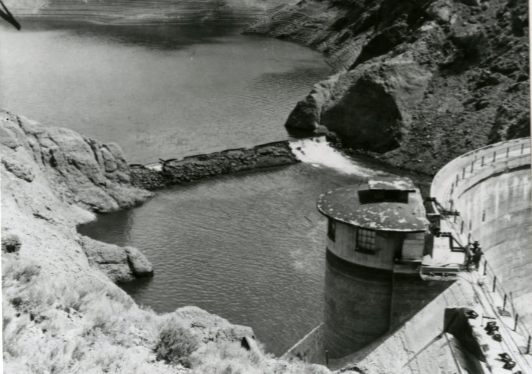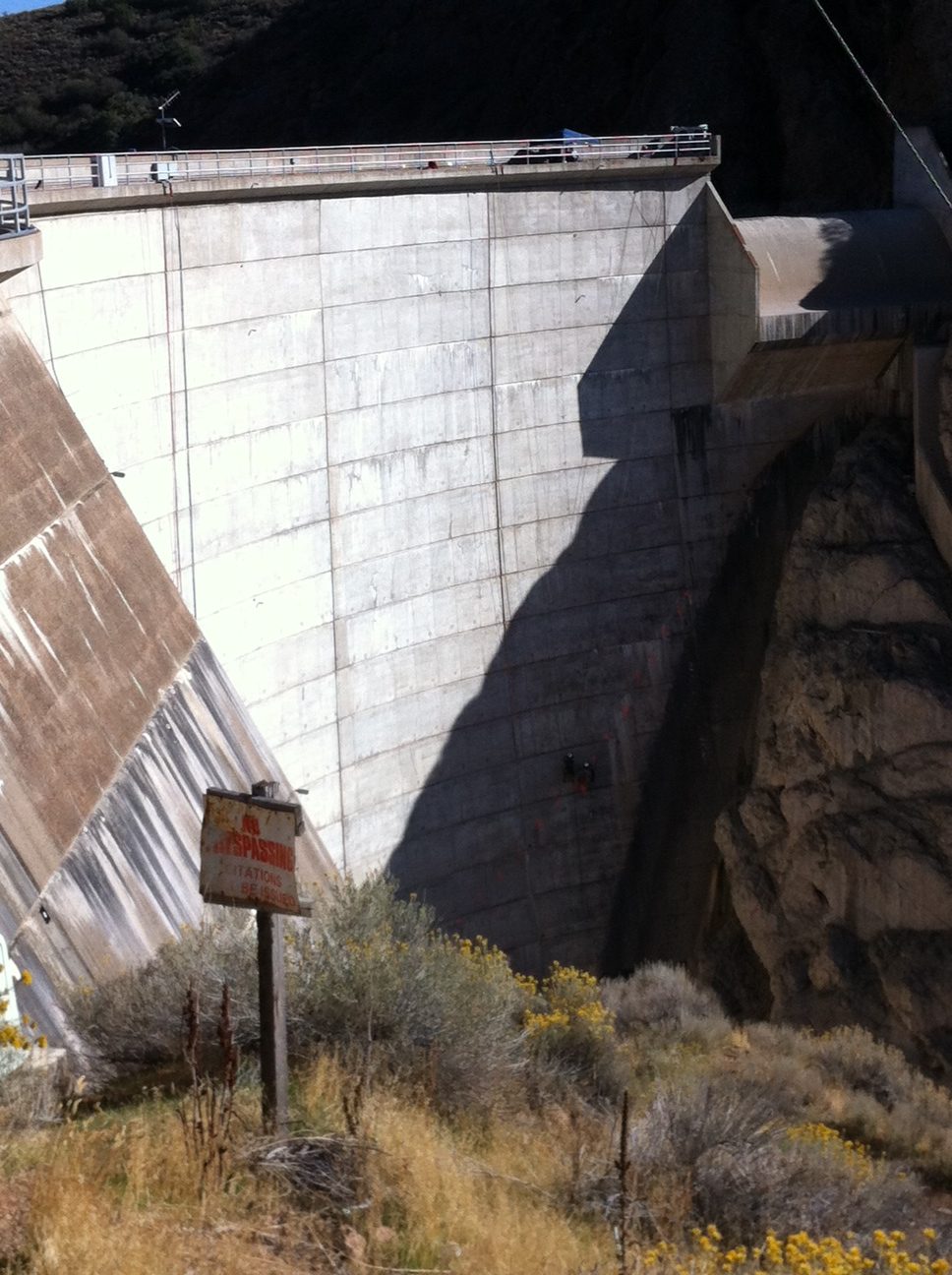Overview of Park History
East Canyon, located in Utah, holds historical significance primarily associated with its natural features, pioneer trails, and regional development. Here are some facets of East Canyon’s history:
Pioneer Trails:
- Mormon Trail and Hastings Cutoff: Portions of the Mormon Trail and the ill-fated Hastings Cutoff, used by the Donner-Reed Party, passed through or near East Canyon during the westward migration in the mid-19th century.
- Pioneer Migration: The area witnessed the passage of Latter-day Saint pioneers and other settlers as they journeyed westward, seeking new settlements and opportunities.
Transportation and Development:
- Railroad and Transportation: The construction of railroads, including the First Transcontinental Railroad, traversed through parts of the canyon, contributing to transportation and commerce in the region.
- Water Management: East Canyon Reservoir, created as part of a water storage project, served irrigation and municipal needs, aiding in regional agricultural development.
Recreational Transformation:
- Evolution to State Park: Over time, the area transitioned into East Canyon State Park, preserving its natural beauty and historical significance while offering recreational opportunities such as camping, boating, and hiking.
- Outdoor Activities: The park became a hub for outdoor enthusiasts, providing a range of activities amidst scenic landscapes.
Natural Attractions:
- Scenic Beauty: East Canyon boasts picturesque landscapes, including mountainous terrains, forests, and bodies of water, attracting visitors for outdoor adventures and nature appreciation.
- Wildlife and Ecology: The region is home to diverse wildlife and ecosystems, contributing to its ecological importance and appeal.
Cultural Heritage:
- Historical Sites: East Canyon may have historical sites, markers, or remnants associated with pioneer trails, railroads, and early settlements, preserving the area’s heritage.
Exploring East Canyon’s history encompasses its role in pioneer migration, transportation development, natural beauty, and its transformation into a state park offering recreational activities.
Donner-Reed Party
The Donner-Reed Party, a group of pioneers seeking a new life in California during the westward migration of the mid-19th century, faced a harrowing journey fraught with tragedy and hardship.
Overview:
- Departure: In April 1846, the families of James Reed and George and Jacob Donner departed Illinois for California as part of a larger wagon train.
- Hastings Cutoff: Around Fort Laramie, Wyoming, they opted to take the ill-fated Hastings Cutoff, a supposed shortcut that led to unforeseen challenges.
Challenges:
- Tragic Decision: The decision to take the Hastings Cutoff resulted in delays and difficult terrain, leading to their entrapment near the Sierra Nevada Mountains.
- Sierra Nevada Winter: Stranded by early snows in the Sierra Nevada during the winter of 1846-1847, the party faced extreme cold, starvation, and illness.
Tragic Outcome:
- Starvation and Illness: Nearly half of the travelers died from starvation, sickness, and exposure to the harsh conditions.
- Rescue Attempts: Rescue parties were repeatedly hindered by blizzards and deep snow, further delaying aid to the stranded pioneers.
Legacy:
- Survivors: Those who survived were eventually rescued and taken to safety, marking the end of one of the most tragic episodes in American pioneer history.
- Historical Significance: The Donner Party’s ordeal serves as a poignant reminder of the immense hardships faced by pioneers during westward migration.
The Donner-Reed Party’s journey, marked by its tragic end in the Sierra Nevada Mountains, remains a somber chapter in American history, highlighting the challenges and sacrifices endured by pioneers in pursuit of a better life in the West.
Mormon Trail
The Mormon Trail, a significant part of American pioneer history, traversed through East Canyon, leaving an indelible mark on the region. Here’s an overview of the Mormon Trail’s history through East Canyon:
Pioneer Migration:
- Westward Migration: In the mid-19th century, thousands of Latter-day Saint pioneers, also known as Mormons, embarked on a journey westward to settle in Utah’s Salt Lake Valley.
- Trail Route: The Mormon Trail was one of the key routes taken by these pioneers, covering vast distances to reach their promised land.
East Canyon Passage:
- Passage through East Canyon: The trail crossed through East Canyon as part of its arduous journey across the Great Plains and the Rocky Mountains.
- Challenges of the Route: East Canyon posed challenges such as steep terrain, unpredictable weather, and rugged landscapes, making the journey demanding for the pioneers and their wagons.
Importance and Significance:
- Historical Importance: The Mormon Trail represented a significant chapter in American migration history, reflecting the courage and resilience of pioneers seeking religious freedom and a new life.
- Trail Markers and Sites: Certain markers, landmarks, and historical sites in East Canyon might commemorate the passage of Mormon pioneers, preserving their legacy and the trail’s significance.
Legacy and Heritage:
- Cultural Heritage: The Mormon Trail’s passage through East Canyon contributes to Utah’s cultural heritage, honoring the perseverance and sacrifices of the pioneers.
- Historical Context: Understanding the trail’s role in shaping the region’s settlement and development enriches the historical context of East Canyon and its surroundings.
The Mormon Trail’s journey through East Canyon stands as a testament to the determination and fortitude of the pioneers who traversed challenging terrains in pursuit of a new life and religious freedom in the American West.
Construction of the Reservoir:
East Canyon Reservoir, situated within East Canyon State Park in Utah, holds historical significance tied to the region’s development and water management.
- Creation: The reservoir was constructed as part of a water storage project in the early 20th century.
- Purpose: Primarily built to store water for irrigation, municipal, and industrial use in the surrounding areas.
First Transcontinental Railroad:
- Historic Importance: The area around East Canyon Reservoir played a role in the construction of the First Transcontinental Railroad in the late 1860s.
- Railroad Route: The railroad, a significant engineering achievement, passed near the reservoir’s vicinity, facilitating transportation and commerce.
Water Management and Development:
- Water Source: The reservoir is fed by East Canyon Creek, providing a critical water source for local communities and agriculture.
- Development Impact: Its creation contributed to the growth and development of the region by ensuring water availability for various purposes.
Recreational Transformation:
- Evolution: Over time, the reservoir transitioned from primarily serving water management needs to becoming a recreational hub.
- Recreational Activities: Boating, fishing, swimming, and picnicking became popular activities around the reservoir.
Preservation and Park Establishment:
- State Park: The reservoir and surrounding area were eventually designated as East Canyon State Park, preserving its natural beauty and historical significance.
- Conservation Efforts: Conservation initiatives aim to protect the reservoir and its ecosystem while offering recreational opportunities to visitors.
The East Canyon Reservoir stands as a testament to the area’s historical development, transitioning from a critical water management resource to a beloved recreational destination within East Canyon State Park. Its history reflects the intersection of human innovation, water management, and natural beauty in Utah’s landscape.

